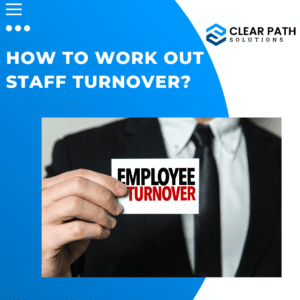Although Employee Resignations are inevitable, but, whenever an employee submits a resignation letter, it can be—surprise, disappointment, or even relief, depending on the situation.
However, regardless of the reason or reaction, how you respond to a resignation letter reflects your professionalism as an employer and, the organization’s culture.
A well-thought response ensures a smooth employee offboarding, maintains goodwill, and protects your employer brand.
In this comprehensive guide, we’ll walk you through the best practices for responding to a resignation letter, including communication tips, legal considerations, and sample templates you can use.
Step-by-Step Guide to Responding to a Resignation Letter
-
Acknowledge the Resignation Promptly
Time is of the essence. Respond within 1–2 business days of receiving the resignation letter. Delays can create uncertainty and unnecessary tension. Even if you’re still processing the news or deciding whether to make a counteroffer, acknowledge that the letter has been received.
Always, Use a professional tone and avoid emotional reactions. Keep it neutral but courteous.
Example: “Thank you for your resignation letter dated July 26, 2025. I acknowledge receipt and understand your intention to resign from your position as [Job Title] with effect from [Last Working Day].”
-
Express Gratitude for Their Service
Even if the resignation is unexpected or under strained circumstances, it’s good practice to thank the employee for their contributions. Gratitude shows class and helps leave the door open for future collaboration.
Example: “I want to take this opportunity to thank you for your contributions over the past [X years/months]. Your efforts on [specific projects/initiatives] have been valuable to our team and organization.”
-
Confirm the Last Working Day
Ensure that the notice period is in line with the employment contract or company policy. If needed, mention whether accrued leave will be adjusted or if early release is an option.
Example: “According to your notice period and company policy, your last working day will be [date]. If there are any changes or considerations regarding this, please let us know.”
-
Outline Exit Procedures
Let the employee know what to expect during their notice period, including:
- Final responsibilities
- Handover documentation
- Knowledge transfer sessions
- Exit interview process
- Return of company property
Example: “During your notice period, we will arrange a structured handover and schedule an exit interview. Please coordinate with [HR/Team Lead] for completing clearance formalities and returning any company equipment.”
-
Address Counteroffers, If Any
If the organization wants to retain the employee, this is the time to initiate that conversation. However, this should be handled separately—either in person or via a follow-up email—not in the acknowledgment letter.
Keep the resignation response neutral and don’t pressure the employee to change their mind unless you’re following up separately with a formal counteroffer.
-
Maintain a Positive Tone
Whether the resignation is amicable or not, your tone should always remain professional. Avoid venting frustrations, making accusations, or expressing disappointment in a passive-aggressive way.
Remember: The resignation letter may be kept in HR files, and how you respond could impact legal documentation or future rehiring possibilities.
-
Encourage an Open Door for Future Opportunities
If appropriate, you may end your message by wishing the employee success and letting them know they’re welcome back in the future.
Example: “We appreciate your time at [Company Name] and wish you all the best in your future endeavors. Should circumstances align in the future, we’d be happy to consider working with you again.”
Why Responding Properly to a Resignation Letter is Crucial?
An employee’s resignation may not be the outcome you expected, but the way you handle it is critical for several reasons:
Professionalism: A formal, respectful response shows that you value the contributions of the employee.
Legal Record: Written acknowledgment can serve as documentation for HR and legal purposes.
Reputation Management: Exiting employees may talk about their departure experience with peers or online.
Smooth Transition: Timely and appropriate communication ensures business continuity and proper knowledge transfer.
Whether the employee is a junior associate or a senior leader, your response must be timely, respectful, and clearly worded.
Sample Resignation Acceptance Email Template
Here’s a full sample email you can customize:
————————————————————————————————————-
Subject: Acknowledgment of Resignation – [Employee Name]
Dear [Employee Name],
Thank you for your resignation letter dated [Date]. I acknowledge receipt and understand your intention to resign from your role as [Job Title], with your final working day being [Date], in accordance with your notice period.
We appreciate your efforts and dedication during your tenure with us, particularly your work on [mention specific projects or achievements]. Your contributions have been valued, and you will be missed.
Please work with [Team/HR Contact] to ensure a smooth transition, including completing all required documentation, knowledge transfer, and exit formalities.
We wish you continued success in your next role and future endeavors. Thank you once again for being part of the [Company Name] team.
Warm regards,
[Your Name]
[Your Title]
[Company Name]
————————————————————————————————————-
What Not to Do When Responding to a Resignation
Here are some common pitfalls to avoid:
- Ignoring the Resignation: Silence can lead to misunderstandings and erode trust.
- Getting Emotional or Defensive: Even if the resignation feels like betrayal, never take it personally.
- Delaying the Process: Delayed responses can disrupt planning and demotivate the team.
- Refusing to Acknowledge Contributions: Even a struggling employee deserves a dignified exit.
HR and Legal Considerations
From an HR compliance perspective, here’s what HR teams should keep in mind:
- Documentation: File both the resignation letter and your response in the employee’s personnel file.
- Final Settlement: Ensure all dues, including unused leave, bonuses, or reimbursements, are cleared.
- Non-Compete/Confidentiality Clauses: Remind the employee (if applicable) of their obligations post-employment.
- Exit Interview: Use this as a valuable feedback opportunity to improve workplace culture.
Concluding Note
Resignations are a natural part of any professional organization. But, the way you respond to a resignation letter sets the tone for the employee’s exit experience and your company’s employer brand.
By following a structured, respectful, and positive approach, you can preserve relationships, ensure smooth transitions, and maintain workplace harmony.
In the UK, responding to an employee’s resignation letter promptly and professionally is a crucial aspect of effective HR management.
Employers should acknowledge the resignation in writing within 1–2 business days, confirm the final working date in line with contractual notice periods, and express appreciation for the employee’s contributions.
Clear communication around handover, final pay, and exit procedures—along with a courteous and positive tone—helps ensure a smooth transition and protects the organisation’s reputation.
Proper documentation and compliance with UK employment laws, including final settlements and contractual obligations, are essential to managing resignations effectively and maintaining a respectful workplace culture.
Whether it’s your top performer or a probationary hire, every resignation deserves a dignified and professional response. Use this opportunity not just to say goodbye—but to demonstrate your company’s values in action.
Key Takeaways
- Respond to resignation letters within 24–48 hours.
- Express appreciation and confirm the last working day.
- Maintain a positive, respectful tone regardless of circumstances.
- Outline next steps clearly: handover, exit interview, final settlement.
- Avoid emotional or defensive reactions.
- Always document the exchange for HR records.
Looking for expert guidance on handling employee resignations professionally?
At Clear Path Solutions, we help UK employers manage every stage of the employee lifecycle—from onboarding to exit—with compliance, clarity, and care.
Whether you need resignation response templates, legal advice, or tailored HR support, our specialists are here to help.
Contact us today for personalised solutions that keep your business compliant and your workforce engaged.





